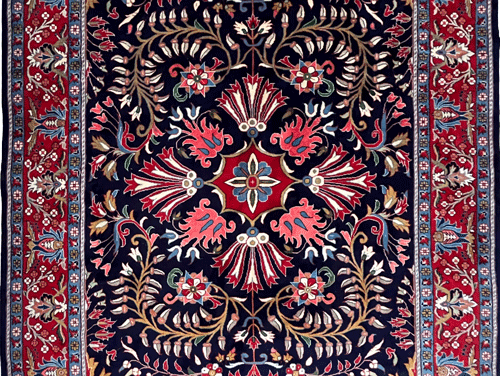Sarouk Rug

Origin Of Antique Sarouk Rugs
Sarouk is a village about 25 miles north of Arak (Formerly known as Soltân Âbâd). Known for its active carpet weaving from the late 19th to early 20th century, it gained prominence through the work of Farahan, a renowned local designer. Farahan created rugs with center medallion motifs to compete with Kashan, resulting in the Antique 19th-century Farahan Sarouks.
What is American Sarouk?
In the 1920s and 1930s, a New York rug dealer popularized rose-field carpets with blue borders and floral motifs in America. However, the rose color faded due to the alkaline finishing process in Arak. Rather than altering the process or dyes, merchants repainted the rose color on thousands of rugs. Despite these modifications, Antique Sarouk rugs remain among the most luxurious Persian carpets.
Value of a Sarouk rug
Sarouk rugs are highly valued for their durability, capable of withstanding heavy foot traffic typical in hallways, common rooms, and foyers. Their thick, luxurious pile made them popular in Western markets. In the early 1900s, painted Sarouks with vibrant garnet and salmon-pink hues became especially popular. Although purists may not appreciate these alterations, painted Sarouk rugs are iconic.
Traditional Sarouk rugs feature curvilinear vine scrolls, opulent arabesques, and bouquet-filled designs. These designs showcase the diversity of regional carpet-weaving traditions. Typically made with blue weft threads, they incorporate a variety of pure and clear colors. The village produces stunning medallion-and-corner rugs and exquisite allover Herati patterns. Sarouk carpets possess an enduring aesthetic, making them perpetually in demand.
Sarouk rugs have a knot density of 35 x 40 to 40 x 48 knots per square centimeter. They feature machine-spun cotton warps with hand-spun thinner wefts. The design patterns boast structured approaches with rose-colored fields and blue floral sprays.
These rugs, known for their opulence and durability, continue to be a testament to Persian artistry and craftsmanship.


